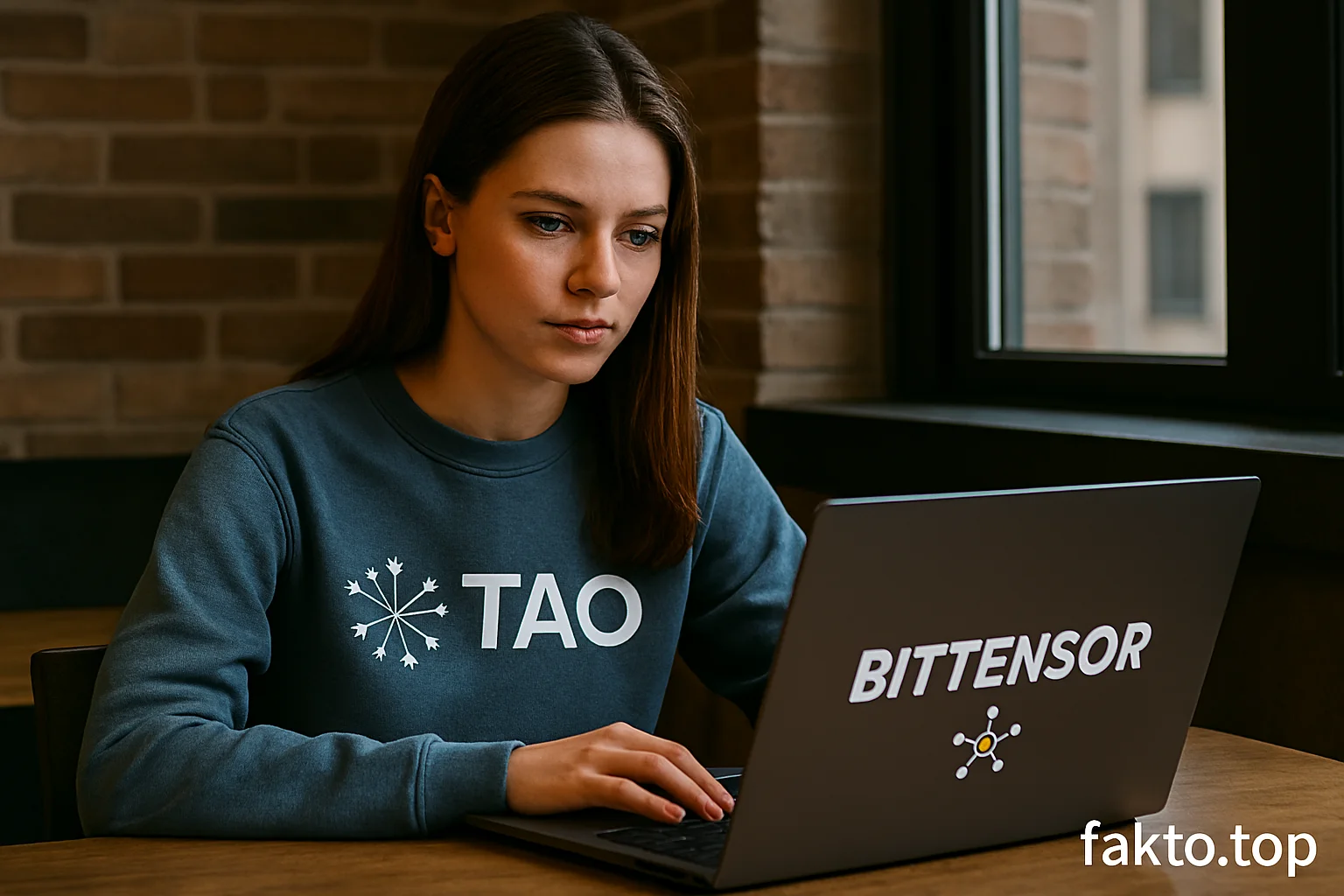WTF is TAO? How Bittensor Is Paying AI to Think Smarter — Explained for Normies
AI + Crypto = Chaos or Revolution?
Let’s be honest — most crypto projects are either trying to reinvent money, build a new internet, or just meme their way to a pump. But Bittensor? TAO? This one’s different. It’s not another dog coin or a DeFi clone. It’s a protocol that pays artificial intelligence to think. Literally. TAO is the native token of Bittensor, a decentralized network where AI models compete, collaborate, and earn rewards for being smart. It’s like Hunger Games for neural networks, but instead of dying, they get paid.
And yeah, it’s already live. Not vaporware. Not a whitepaper fantasy. Real code. Real incentives. Real weird.

So What the Hell Is Bittensor?
Bittensor is a decentralized machine learning protocol built on Substrate (same tech stack as Polkadot). It’s designed to create a global, open-source intelligence layer — a kind of decentralized brain — where AI models plug in, perform tasks, and get rewarded in TAO tokens. No central authority.
No gatekeepers. Just raw intelligence competing for crypto. Think of it like a blockchain-powered leaderboard for AI. The better your model performs, the more TAO you earn. And the kicker? Anyone can participate. You don’t need to be OpenAI or Google. You just need a model, some compute, and a little hustle.
How Does It Actually Work?
Here’s the TL;DR: Bittensor runs a network of “subnets.” Each subnet is like a mini-arena for a specific type of AI task — text generation, image recognition, translation, etc. Models plug into these subnets and perform tasks. Validators (other nodes) score their outputs.

The better the performance, the higher the reward. TAO is the incentive layer. It’s what keeps the whole system honest and competitive. There’s no centralized ranking. No fixed rules. Just a dynamic, evolving ecosystem where intelligence is the currency. It’s messy, chaotic, and kind of beautiful.
Subnets: The AI Battlegrounds
Each subnet is its own little universe. Some are focused on NLP (natural language processing), others on vision, others on reinforcement learning. The idea is to let models specialize and compete in their domain. For example, Subnet 1 might be all about generating text responses (think ChatGPT), while Subnet 8 might be focused on image classification. Models join, perform tasks, and get scored.
The top performers earn TAO. The rest? They get nothing. It’s brutal. But it’s also meritocratic. No marketing. No hype. Just performance.
Technical Resources: GitHub, Whitepaper, and Substrate Docs
For those seeking a deeper technical understanding of Bittensor, several primary sources offer valuable insights. The official GitHub repository contains the full codebase, including modules for validator logic, subnet registration, and mining mechanics. It’s actively maintained, with frequent commits and community contributions, making it a reliable reference for developers and researchers alike.
The whitepaper outlines the protocol’s foundational principles, including its incentive structure, consensus model, and approach to decentralized intelligence. Unlike many crypto whitepapers, it’s relatively concise and focused on practical implementation rather than abstract theory. For those unfamiliar with the underlying blockchain framework, Bittensor is built on Substrate — a modular toolkit developed by Parity Technologies.
The Substrate documentation provides extensive coverage of runtime development, networking, and consensus mechanisms, which are essential for understanding how Bittensor achieves scalability and flexibility. Together, these resources form a comprehensive technical foundation for anyone looking to build, audit, or contribute to the Bittensor ecosystem.
Whether you’re a developer, validator, or simply a curious observer, diving into the source code and documentation reveals the depth and seriousness of the project beyond its market performance.
Validators: The Judges of Intelligence
Validators are the backbone of Bittensor. They evaluate the outputs of models and assign scores. But here’s the twist: validators also earn TAO based on how well they score models. If you reward good models, you earn more. If you reward garbage, you get penalized. It’s a feedback loop that incentivizes honesty and quality. Validators don’t just sit there and rubber-stamp results. They’re active participants in the intelligence economy. And yes, you can be both a validator and a model host. Dual roles. Double rewards. Double headaches.

Why TAO Is Mooning (And Why It Might Keep Going)
TAO isn’t just another altcoin. It’s the fuel of a new kind of economy — one where intelligence is the commodity. And the market is starting to notice. In 2025, TAO hit a $3.2B market cap, with over 90 active subnets and thousands of participants. Big names like Polychain, Delphi Digital, and even some ex-Google folks are sniffing around. The hype is real. But so is the tech. Unlike most AI x crypto projects (which are basically just buzzwords on a token), Bittensor has actual utility. Models earn TAO. Validators earn TAO. The network grows. The token appreciates. It’s a virtuous cycle — if it holds.
TAO Tokenomics: Scarcity Meets Utility
| Metric | Value | Comment |
|---|---|---|
| Max Supply | 21M TAO | Same as Bitcoin — intentional scarcity |
| Current Circulating | ~6.5M TAO | Slow emission via mining |
| Inflation Rate | Dynamic | Based on network activity |
| Utility | Staking, rewards, governance | Core to network function |
Okay, But Is This Actually Useful?
Fair question. Most crypto projects promise the moon and deliver a JPEG. But Bittensor is already being used. Subnets are live. Models are earning. Validators are scoring. There’s a real ecosystem here. And the use cases are wild. Imagine a decentralized ChatGPT that gets smarter over time because it’s competing with other models. Or an image classifier that improves because it’s being scored by thousands of validators. This isn’t theoretical. It’s happening. And the best part? It’s open. Anyone can join. No API keys. No paywalls. Just code.
Real Use Cases (2025)
| Subnet | Function | Example |
|---|---|---|
| Text Prompting | Generate responses | Chatbots, assistants |
| Image Gen | Create visuals | Art, branding, memes |
| Translation | Language conversion | Multilingual apps |
| Reinforcement Learning | Decision making | Game AI, robotics |
How to Buy TAO in USA/Canada (Without Losing Your Mind)
TAO isn’t listed on Coinbase or Binance (yet). But you can grab it on MEXC, KuCoin, or via decentralized exchanges like Uniswap. The process is a bit clunky, but manageable. First, get USDT or ETH. Then send it to your exchange wallet. Buy TAO. Withdraw to a TAO-compatible wallet (like Finney or Coldkey). Boom — you’re in. Just don’t forget to double-check the contract address. There are fake TAOs floating around. And yes, always use 2FA. This isn’t 2017. Security matters.

Step-by-Step Buying Guide
- Buy USDT or ETH on Coinbase or Kraken
- Send to MEXC or KuCoin
- Search for TAO/USDT pair
- Buy TAO and withdraw to wallet
- Optional: stake TAO to earn rewards
Should You Care? (Spoiler: Probably)
If you believe AI is the future — and let’s be real, it is — then Bittensor is worth watching. It’s not perfect. The UX is rough. The documentation is dense. And the community is still mostly devs and crypto nerds. But the vision? It’s massive. A decentralized intelligence layer that pays models to be smart. That’s not just cool. That’s potentially world-changing.
TAO is the first token that rewards intelligence directly. Not speculation. Not hype. Just performance. And in a world drowning in noise, that’s refreshing.
Final Thoughts: TAO Is Weird, But That’s Why It Might Win
TAO isn’t for everyone. It’s technical. It’s chaotic. It’s early. But it’s also one of the few crypto projects that feels genuinely new. Not a clone. Not a cash grab. Something different. Something ambitious
